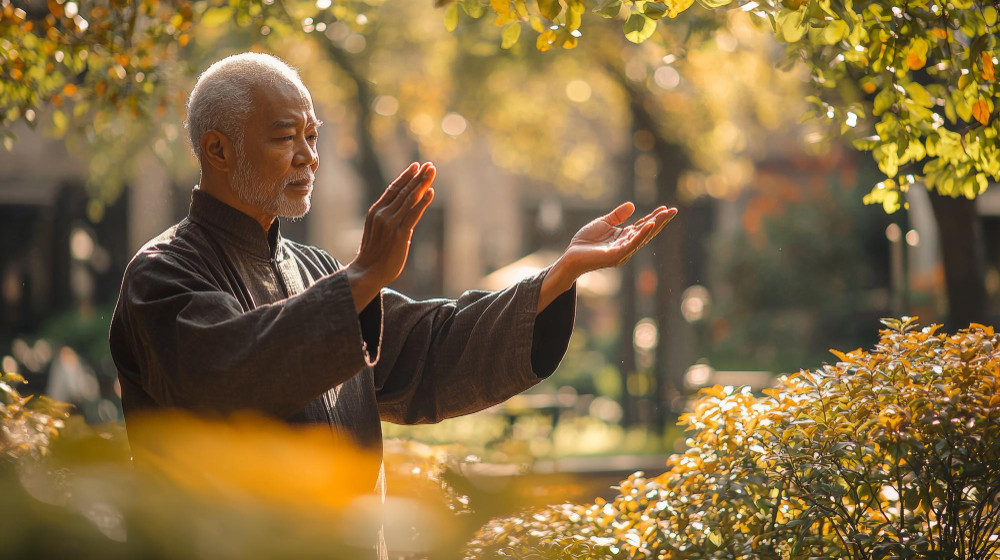Mindfulness, Spirituality and Meditation: A Journey Through Ancient Wisdom
In our increasingly fast-paced world, more people are turning to ancient practices to find peace, clarity, and meaning. Among these timeless traditions, mindfulness stands as a beacon of hope—a practice that bridges the gap between our modern struggles and the profound wisdom of our ancestors. This journey into mindfulness, spirituality, and meditation reveals how these interconnected practices have shaped human consciousness for millennia and continue to offer transformative healing in our contemporary lives.
The Sacred Foundation of Mindfulness Practice
When we speak of mindfulness today, we often think of stress reduction techniques or workplace wellness programs. However, the roots of mindfulness run far deeper than these modern applications. At its core, mindfulness represents a sacred awareness—a way of being present that opens us to the profound mysteries of existence itself.
Mindfulness is not merely about paying attention; it’s about cultivating a quality of presence that allows us to touch the divine within ourselves and the world around us. This practice invites us to step beyond the constant chatter of our minds and connect with something greater than our individual concerns. Through mindfulness, we begin to recognize that our spiritual nature is not separate from our daily experiences but is woven into every moment of our lives.
The beauty of mindfulness lies in its simplicity and accessibility. Unlike complex philosophical systems or elaborate rituals, mindfulness can be practiced anywhere, at any time. Whether we’re washing dishes, walking in nature, or sitting in quiet contemplation, mindfulness transforms ordinary moments into opportunities for spiritual connection and growth.
The Transformative Power of Buddhist Mindfulness
Buddhism offers perhaps the most comprehensive framework for understanding mindfulness as a spiritual practice. The Buddha’s teachings, preserved for over 2,500 years, provide a clear path for those seeking liberation from suffering through mindful awareness. In Buddhist tradition, mindfulness is not simply a technique but a way of life that leads to profound transformation.
The practice of Vipassana, or insight meditation, exemplifies how mindfulness can become a vehicle for spiritual awakening. Through careful observation of our thoughts, emotions, and sensations, practitioners develop a deep understanding of the impermanent nature of all phenomena. This insight doesn’t remain merely intellectual—it becomes a lived experience that fundamentally changes how we relate to ourselves and the world.
Buddhist mindfulness teaches us that suffering arises from our attachment to things that are constantly changing. By cultivating mindful awareness, we learn to observe our experiences without grasping or pushing away. This practice of non-attachment doesn’t make us indifferent; rather, it opens our hearts to a deeper compassion and understanding.
The Four Foundations of Mindfulness—mindfulness of body, feelings, mind, and mental formations—provide a comprehensive map for spiritual development. Each foundation offers unique insights and challenges, guiding practitioners through progressively deeper levels of self-understanding and spiritual realization.
Zen meditation, another profound expression of Buddhist mindfulness, emphasizes the importance of just sitting and being present. In Zen practice, mindfulness becomes a gateway to recognizing our true nature—the Buddha nature that exists within each of us. This recognition isn’t achieved through effort or striving but through the gentle, persistent cultivation of present-moment awareness.

Hindu Traditions: The Many Paths of Mindful Spirituality
Hinduism presents a rich tapestry of meditative practices, each offering unique approaches to spiritual realization through mindfulness. The tradition recognizes that different temperaments and spiritual inclinations require different paths, yet all roads ultimately lead to the same destination: union with the divine.
Dharana, the practice of concentration, represents one of the most fundamental forms of Hindu mindfulness. By focusing the mind on a single object—whether a mantra, an image, or the breath—practitioners learn to gather their scattered mental energies and direct them toward spiritual purposes. This concentrated awareness becomes a powerful tool for transcending the limitations of ordinary consciousness.
Bhakti yoga, the path of devotion, transforms mindfulness into an expression of love and surrender. Through practices like kirtan (devotional singing) and puja (ritual worship), practitioners cultivate a mindful awareness infused with love and devotion. This approach demonstrates how mindfulness can become a vehicle for opening the heart and connecting with the divine through emotion and feeling.
The Bhagavad Gita, one of Hinduism’s most revered texts, presents Krishna’s teachings on mindful action through Karma Yoga. This path shows how every action can become a spiritual practice when performed with mindful awareness and without attachment to results. The Gita teaches us that spiritual realization doesn’t require withdrawal from the world but rather mindful engagement with our duties and responsibilities.
Jnana Yoga, the path of knowledge, uses mindfulness to investigate the nature of reality and the self. Through practices like self-inquiry and contemplation, practitioners develop a discriminating awareness that can distinguish between the eternal and the temporary, the real and the illusory. This analytical approach to mindfulness appeals to those with intellectual temperaments while still leading to the same goal of spiritual realization.
The tradition of Raja Yoga, systematized by Patanjali in the Yoga Sutras, presents an eight-limbed path that culminates in the state of samadhi—perfect meditative absorption. Each limb of this path incorporates mindfulness in different ways, from ethical conduct to physical postures to breath control and meditation. This comprehensive approach shows how mindfulness can transform every aspect of our lives.

Taoist Wisdom: Flowing with Natural Mindfulness
Taoism offers a unique perspective on mindfulness that emphasizes harmony with the natural flow of existence. Rather than seeing mindfulness as a technique to be practiced, Taoism views it as our natural state—a way of being that aligns us with the Tao, the ineffable source and pattern of all existence.
The Taoist concept of wu wei, or effortless action, represents a profound form of mindfulness that involves acting in harmony with natural rhythms and patterns. This practice teaches us to respond to life’s circumstances with fluid awareness rather than forcing our will upon situations. Through wu wei, mindfulness becomes a dance with life rather than a struggle against it.
Qigong, the practice of cultivating vital energy, demonstrates how mindfulness can be integrated with movement and breath. These gentle, flowing exercises help practitioners develop a mindful awareness of their body’s energy systems while simultaneously cultivating spiritual vitality. The slow, deliberate movements of Qigong embody a form of moving meditation that harmonizes body, mind, and spirit.
Neidan, or internal alchemy, represents the more esoteric dimension of Taoist mindfulness. This practice involves the cultivation and refinement of internal energies through specific meditative techniques. Practitioners learn to work with their subtle energies, transforming base elements of their nature into spiritual gold. This alchemical approach to mindfulness shows how ancient wisdom can guide us in the work of spiritual transformation.
The Taoist emphasis on naturalness and spontaneity offers a refreshing counterpoint to more structured approaches to mindfulness. Rather than following rigid rules or techniques, Taoist mindfulness encourages us to trust our innate wisdom and allow our practice to unfold organically. This approach can be particularly healing for those who have become overly analytical or goal-oriented in their spiritual practice.
The Universal Language of Mindful Awareness
What becomes clear when we explore these diverse traditions is that mindfulness speaks a universal language that transcends cultural and religious boundaries. Whether expressed through Buddhist insight meditation, Hindu devotional practices, or Taoist flowing awareness, mindfulness points to the same fundamental truth: we have the capacity to awaken to our true nature and connect with the sacred dimension of existence.
This universality doesn’t mean that all approaches to mindfulness are identical. Each tradition offers unique insights, methods, and perspectives that can enrich our understanding and practice. The Buddhist emphasis on insight and liberation complements the Hindu focus on devotion and union, while the Taoist celebration of naturalness and flow adds another dimension to our spiritual toolkit.
The convergence of these traditions in their emphasis on present-moment awareness suggests something profound about the nature of consciousness itself. Mindfulness appears to be not just a practice we do but a fundamental quality of awareness that, when cultivated, reveals the interconnected nature of all existence.
Modern Applications of Ancient Wisdom
In our contemporary world, these ancient approaches to mindfulness offer profound resources for healing and transformation. The secular mindfulness movement has successfully adapted many traditional practices for modern contexts, making these powerful tools accessible to people regardless of their religious or spiritual beliefs.
However, understanding the spiritual roots of mindfulness can deepen our practice and expand our appreciation for its transformative potential. When we recognize that mindfulness is not merely a stress-reduction technique but a pathway to spiritual awakening, our practice naturally becomes more profound and meaningful.
The integration of mindfulness into healthcare, education, and business settings demonstrates the practical value of these ancient insights. Yet the most profound benefits of mindfulness may lie not in its ability to improve our performance or reduce our stress but in its capacity to awaken us to the sacred dimension of ordinary experience.
Cultivating Your Own Mindful Spiritual Journey
As you embark on or deepen your own journey with mindfulness, remember that this path is both deeply personal and universally shared. The practices that resonate most strongly with you may draw from one tradition or integrate insights from multiple approaches. The key is to approach your practice with sincerity, patience, and openness to whatever unfolds.
Begin where you are, with whatever time and energy you have available. Whether you have five minutes or an hour, whether you’re drawn to sitting meditation or walking practice, whether you prefer silence or chanting, the essential element is your willingness to show up with mindful awareness. The ancient masters remind us that the path of mindfulness is not about achieving some special state but about learning to be present with whatever arises.
Remember that mindfulness is both a practice and a way of being. While formal meditation periods are valuable, the real transformation happens when we bring mindful awareness into our daily activities. Washing dishes can become a meditation, conversations can become opportunities for mindful listening, and even challenging situations can become teachers in the art of present-moment awareness.
The wisdom of these ancient traditions offers us a precious gift: the recognition that peace, clarity, and spiritual fulfillment are not distant goals to be achieved but present realities to be uncovered. Through mindfulness, we learn to peel away the layers of distraction and conditioning that obscure our true nature, revealing the luminous awareness that has always been our birthright.
The Eternal Dance of Awareness
The journey through mindfulness, spirituality, and meditation reveals a profound truth: these practices are not separate techniques but facets of a single jewel—the awakened heart-mind that recognizes its own divine nature. Whether we approach this recognition through Buddhist insight, Hindu devotion, Taoist flow, or any other authentic spiritual path, we participate in humanity’s eternal quest for meaning, connection, and transcendence.
In our modern world, where distraction and disconnection often seem to dominate, these ancient practices of mindfulness offer a return to our essential nature. They remind us that beneath the surface of our busy lives lies an ocean of peace, wisdom, and love waiting to be discovered. Through mindfulness, we don’t escape the world but learn to engage with it more fully, more compassionately, and more wisely.
The invitation is always present: to pause, to breathe, to notice, to awaken. In this moment, and in every moment that follows, we have the opportunity to touch the timeless wisdom that flows through all genuine spiritual traditions. This is the gift of mindfulness—not as a technique to master but as a way of being to embody, a path of awakening that transforms not only our own lives but contributes to the healing and awakening of our world.
As you continue on your journey with mindfulness, may you find in these ancient practices not just personal peace but a deeper connection to the web of life that connects us all. In cultivating mindfulness, we honor the wisdom of those who came before us while contributing to the flowering of consciousness that is our generation’s sacred gift to the future.
We may earn a commission for purchases made using our links. Please see our disclosure to learn more.




